Inside a cryogenic test facility for superconducting magnets used in the world’s biggest and most powerful atom smasher, members of GESDA’s cohort of 30 participants in Geneva Science Diplomacy Week 2024 spotted an image on the wall depicting protons colliding.
“It reminds me of a map of UN resolutions and their connectivity,” Jonathan Underwood, who leads Wellcome Trust’s major international programs, said in a thought-colliding remark that smashed together some of the weeks’ boundary-spanning ideas like subatomic particles. He was referring to a session at the University of Geneva’s Lab for Science in Diplomacy (SiDLab) about a computational diplomacy project on UN Security Council resolutions.
One of our physicist guides told us inside the SM18 test facility that the Large Hadron Collider (LHC) – which runs for 27 kilometers some 100 meters beneath the Swiss-French border near Geneva – is the world’s largest cryogenic system and “coolest place on Earth,” because the main magnets operate at 1.9 K (-271.3°C), colder than the 2.7 K (-270.5°C) of outer space. He casually dispensed mind-bending phrases such as “99.9% speed of light” and “neutrons – we detect them by their absence” and “to me, it’s about when I see something that is invisible” and “sometimes the whole machine shrinks by 80 meters.”
Superconducting magnets steer the particles, accelerated at close to the speed of light, around the ring. The LHC produces more than 1 billion particle collisions per second. Giant detectors record the particles formed at the four collision points. A worldwide LHC computing grid (WLCG) has 1.4 million processing cores at 170 data centers in more than 40 countries.

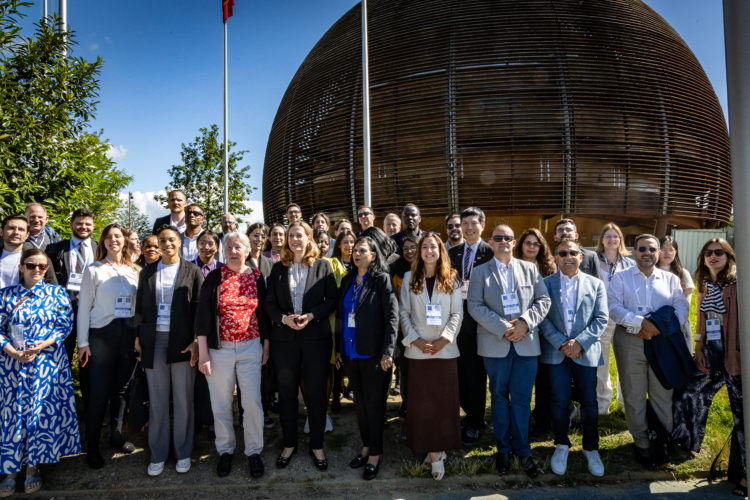
All photos by Michael Chiribau, UNITAR Division for Multilateral Diplomacy
Linkage to the Global Goals
The tour led off our visit to CERN, the French acronym for the European Organization for Nuclear Research, where scientists and officials, including German physicist Rolf-Dieter Heuer, offered their views on science diplomacy and debated whether science is neutral. (The debate within the cohort continued into the evening.) Heuer, whose tenure as director-general of CERN from January 2009 to December 2015 included the global headline-making Higgs boson discovery, said political decisions are best based in science.
Charlotte Lindberg Warakaulle, director for international relations, gave an overview of the treaty-based intergovernmental organization’s scientific cooperation in Europe, which began in 1954. As one of the world’s largest and most respected centers for scientific research, CERN was a forerunner of modern science diplomacy, serving as a haven for British and German scientists to collaborate for the first time in the wake of World War II.
CERN works to advance the UN’s 17 Sustainable Development Goals (SDGs) for 2030 and has identified seven – five SDGs dealing with health, education, gender, energy, and innovation, and two dealing with international cooperation – where it can be particularly active, then tries to tailor its programs to support the advancement of those seven SDGS.
Its fundamental research also has been a driver of innovation in areas such as the World Wide Web, computer touch screens and tracker balls. Some 3,000 students work at CERN, many of them in their late 20s, who use the experience to launch careers in academic, industry and government work.
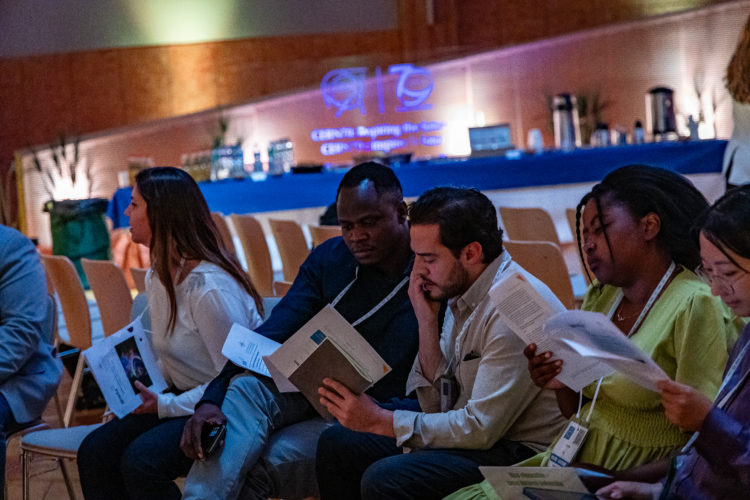
All photos by Michael Chiribau, UNITAR Division for Multilateral Diplomacy
Propelling new technology
About 1,000 high school teachers a year engage in CERN’s educational programs that help them inspire students and increase trust in science. Pippa Wells, deputy director for research and computing, detailed CERN’s governance, which emphasizes open science and collaborations among member and non-member nations.
Archana Sharma, a senior advisor for relations with international organizations, described the work CERN does inspiring young students and serving as a bridge between science and diplomacy. A globally recognized scientist for her pioneering work on micro-pattern gaseous detectors, Sharma played a role in the discovery of the Higgs boson particle and received one of India’s most prestigious awards for her contribution to science and technology.
Egyptian diplomat Mokhtar Omar Ibrahim, a senior advisor to the secretary general of the Inter-Parliamentary Union, emphasized the need for leaders to promote policies for peace and development based on scientific evidence and facts, rather than populism and emotion.
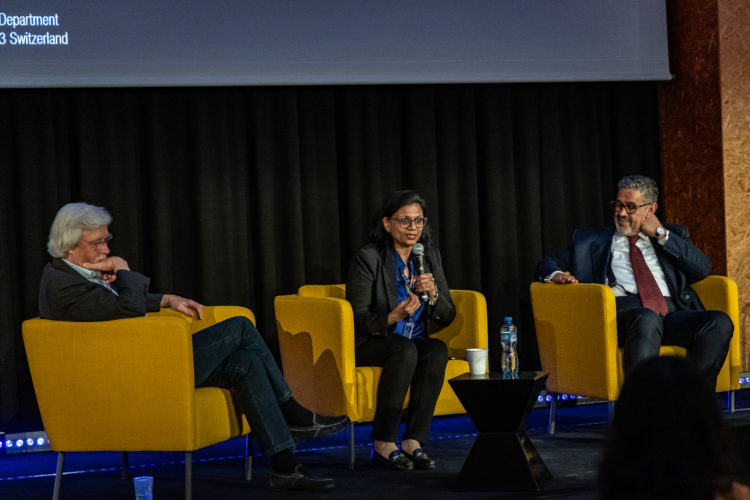
All photos by Michael Chiribau, UNITAR Division for Multilateral Diplomacy
Spreading equal benefits
The day included an interactive role playing game on quantum diplomacy. The scenario was set in 2032, when large-scale quantum computing has been achieved and could help curb global greenhouse emissions – but one country has a monopoly on the technology and imposes export controls on quantum-related goods and services. The crisis goes to the UN.
The game serves as an introduction to GESDA’s most advanced initiative, the Open Quantum Institute (OQI) launched at CERN in March with the support of UBS. Marianne Schörling, a GESDA senior program manager who worked on the OQI’s incubation and launch, said the most optimistic scenarios are for quantum computers to be ready to scale within eight to 10 years.
“What unites us,” she said, “is the determination that we would like to see international cooperation setting a new standard to create a future where we have equal access to the technology and a benefit for all.”
In the evening, a lake dinner cruise on a perfectly tranquil evening transported participants to another perfectly enjoyable realm.
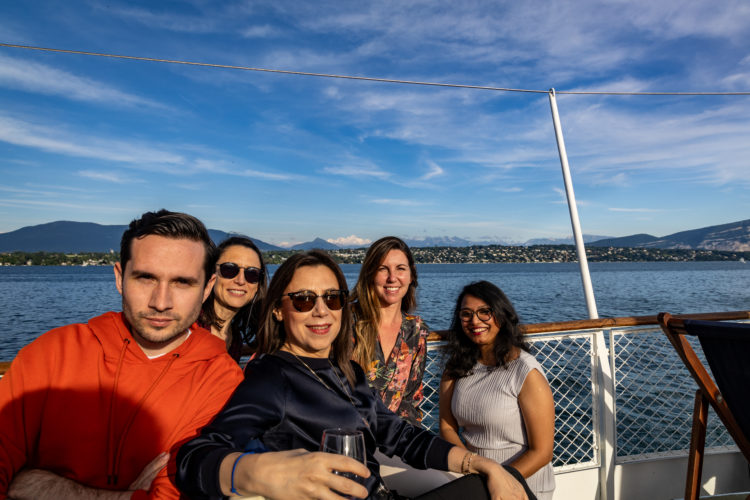
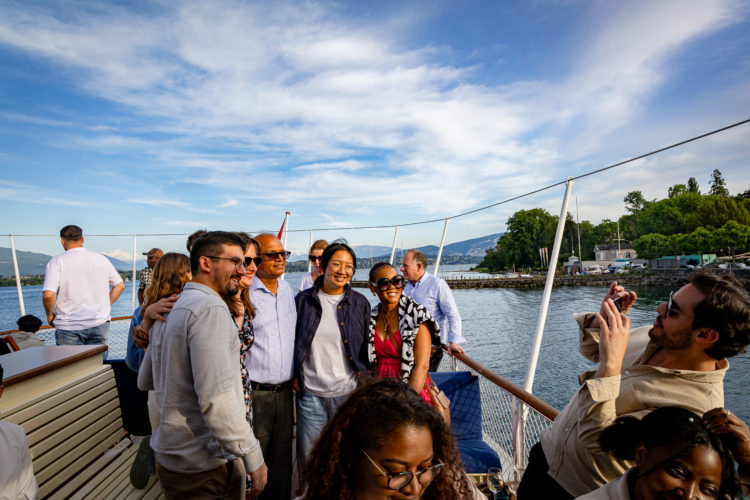
All photos by Michael Chiribau, UNITAR Division for Multilateral Diplomacy
Story by John Heilprin
